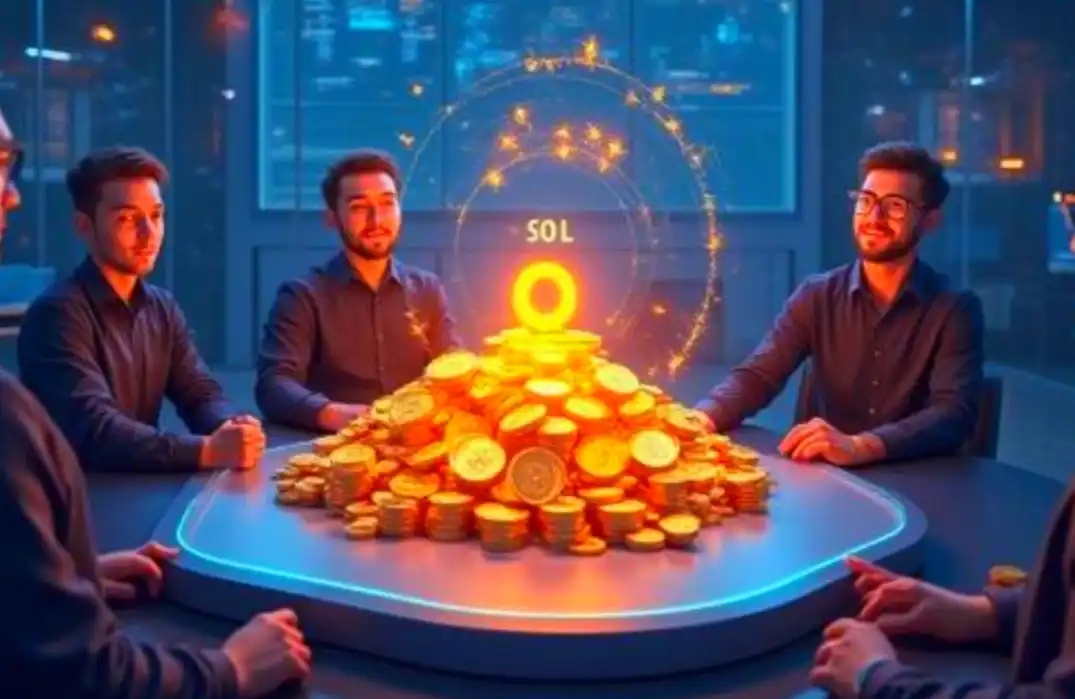HackerLink: Past, Present, Future
Original source: HackerLink
What is Hackerlink.io?
Hackerlink is where developers' dreams come true. Here, DoraHacks supports geeks, open source developers, and builders with funding, collaboration opportunities, and a large community to support their projects. Currently, it is the top developer incentive platform for Web3, with more than 30,000 active builders and teams, developers have received more than $12 million in funding through the platform, and $7.14 million in funding through community contributions. Hackerlink is more than an online platform; it's literally the vision of DoraHacks in practice. A platform where uniquely talented open source developers know how to turn products into sustainable projects and get the support they need. By bringing some of the world's most talented hackers and interested and capable investors into this vast community, Hackerlink will be the perfect melting pot for ideas, innovation, collaboration, and successful projects.
The platform is used for community building and problem solving, providing developers and investors with a wide range of interaction opportunities. Hackerlink allows its users to participate in hackathons, bounty campaigns, receive secondary grants, or submit and explore open source projects. The services provided by Hackerlink will be described in detail below.
Hackathon
A hackathon is a design sprint-like event aimed at creating something significant and relevant in a short period of time (usually 48 hours) . Participants are encouraged to come up with something exciting during the event, and prizes are usually offered to the winners. Apart from being the ideal place to launch your investment projects, it can also be a great place to meet new people, get inspired with new ideas, network with like-minded people, participate in events and win prizes. Through Hackerlink, users can browse hackathons held online or in reality, and never miss an opportunity to turn interesting ideas into projects with active community participation.
Bounty
Bounties are often a problem that needs to be solved, it is posted on the platform and rewarded accordingly. Bounties are a great opportunity for developers to get rewarded for their skills, build relationships, or find other great hackers by posting a problem they need to solve. As mentioned above, users on Hackerlink can post or earn bounties, create this exciting environment, collaborate at scale on the platform, connect developers, Web3 builders with problems they can solve and get rewarded, Make the world a better place. The bounty system provides a win-win scenario where the problem at hand is solved and the hacker gains influence in the community while being rewarded monetaryly.
Quadratic Funding
Hackerlink uses Quadratic funding (QF) to distribute rewards among community projects. QF aims to be the optimal solution to the mathematical model for funding public projects. Essentially, it's a crowdfunding campaign that matches a larger pool of donations based on donations or voter turnout for available projects. This empowers individual members of the community because more weight is given to people than to capital. Through this process, users can participate in projects being voted on or support projects by voting and contributing. This all happens within the platform and uses DoraHacks native QF. This year alone, the Hackerlink platform has funded more than 2,000 projects through Grants including QF.
BUIDLs
BUIDLs are open source projects published on the platform. Users can share ideas and browse other projects posted on Hackerlink directly from the Hackerlink page. BUIDLs aims to bring community members together and inspire everyone to change the world with code. As stated in the DoraHacks blog post, "So far, Gitcoin grants have supported many projects from the Ethereum ecosystem, while HackerLink is supporting projects from multi-chain Web3 ecosystems such as Polygon, BSC, Ethereum, Flow, Filecoin, Solana, etc. project."
How did it all start?
DoraHacks was founded in 2014. At that time, hackathons were not very popular in Asia. In 2014, DoraHacks initiated and began to organize Hackathons in cutting-edge technology fields at the Owl Lab of Tsinghua University. In 2015, DoraHacks organized more than 50 Hackathons. The first Hackathons of Peking University, Beihang University, Shanghai Jiao Tong University, Wuhan University and other universities were all initiated by DoraHacks. By 2017, as the organization grew in popularity, it became one of the largest developer communities in Asia, focusing on related topics such as blockchain, AI, and engineering. The logical next step is to continue expanding to the global community. In 2018, DoraHacks held Web3 and blockchain hackathons in 8 countries and 15 cities around the world, becoming one of the most active Hackathon organizers in the world. As an exciting new area, developers from the community are building projects in the Web3 ecosystem, making projects innovative, practical and accessible as open source projects. DoraHacks becomes the world's largest hacker community and hackathon organizer. In 2019, the "Fourth Industrial Revolution" Hackathon, the largest hackathon in Chinese history, was held in Beijing. At the same time, the DoraHacks community has expanded to more than 50 countries around the world. In 2020, HackerLink, an open source developer incentive platform, will be launched to provide continuous funding for open source developers through Web3 tools such as Grant, Bounty, Hackathon, and BUIDL, and provide infrastructure for the global open source developer community.
Evolution of the Web
In order to provide some background on Hackerlink and its utility, we have to understand our current environment and the relevance of the Web3 project. As the web continues to grow, Hackerlink is an open community for hackers and open source developers to create and build Web3 projects. You may be wondering what exactly Web3 is, and to answer that question we have to go back in time to the historical iterations of the Web. In the early days of the internet itself, we had Web 1.0. Web 1.0 was considered the era of the "read-only" Internet. The role of the public is simply to see what the creators have to offer. In this period, content is made by the few for the many. This allowed millions of people to visit web pages containing information, but users had no option to contribute or write back. After a while, we grew into Web 2.0, a natural evolution of the Internet itself, bringing us into the Web 2.0 era (the web we still primarily use today). In this iteration, the user's role changes from being a bystander who can only read other people's content to being a content creator. This iteration of the web is often referred to as the "social network" because it adds an interactive element to the internet we're already used to. The ability to instantly create accounts, save information, publish posts, provide feedback, and interact with people has characterized a dramatic shift in the way the web is used.
Web3 is still to be formally defined as people have different definitions of what Web3 is. The truth is, Web3 is already underway, but far from finished. There's still no limit to what it can be, which makes it a very exciting space for investors and developers alike. Web3 is the third iteration of the internet that focuses on decentralization as a norm and allows users to interact online without an intermediary, such as Facebook, Google, Airbnb, Bank of America, etc. And Web3 seeks to operate on public blockchains. This decentralization aims to put power back to the people, improving privacy, efficiency, and security on the web. Interesting offshoots of Web3 often include Decentralized Finance (DeFi) and NFTs, which theoretically change the paradigm in financial services and private ownership, allowing users to more efficiently and securely transfer funds and personal items and personal information, such as artwork or medical records.
HackerLink Progress
As of right now, Hackerlink is already one of the largest developer funding platforms in the world. Aiming to connect the global open source community and developers and make developers' dreams come true, the platform has come a long way since its inception. One of the platform's strengths is having numerous top-tier partnerships, with partners including Polygon, Solana, BSC, Celo, Filecoin, Flow and more than 20 major ecosystems. This connectivity within the community positively impacts funding, engagement and attention. In addition to these partnerships, HackerLink currently has over 100,000 monthly active users (MAUs), 30,000 active developers, and over 2,000 open source projects in progress. With a growing community and more and more projects being funded, HackerLink is becoming a hotbed for web3 projects. The team is also working on continuous improvements and adjustments to the platform to better suit users.
What is the future of HackerLink?
At its core, HackerLink is about enabling the most talented hackers to truly build the web of the future, access to project resources and funding, a community of like-minded people to work together, a A truly decentralized funding system, a platform truly centered on innovation. The platform's goal is to change the way the open source world is funded by supporting open source developers and communities worldwide through all services it provides. In addition, in order to provide more space for fair distribution of resources in the future, HackerLink will take the lead in funding projects in underdeveloped countries or regions. Another goal is to help development where talent is available, directing funding to the most exciting projects regardless of where those projects are located, keeping in mind that money from developed countries can make a big difference in other contexts as well.
As for the new features, the team is working on introducing the BUIDL NFT trading system, reward mechanism and integrating continuous funds.
BUIDL NFT:
There are several ways to fund developers. Some have already been mentioned, such as organizing hackathons or using secondary funding seen on HackerLink, among other methods. The goal is to rank the most promising projects from the crowd. The problem with these approaches is that value/price discovery is not intrinsic, as value and potential are determined at each individual event, be it a hackathon or a round of QF. The proposal is to combine NTF and Harberger Tax into one ownership and profit generating solution. It works because any BUIDL can issue a unique NFT with an initial price. The person who minted the NFT becomes the first owner. Anyone can buy an NFT from the project at a price higher than its previous price, which highlights the importance of having a good project that incentivizes the buying and selling of the token itself. Then comes the tax aspect, where a percentage of the price of each transaction is allocated to the previous owner, and each transaction represents a gain for the creator. This all happens using smart contracts. This is a feature coming to Hackerlink soon for experimentation and testing. Still, in theory, it sounds like a great way to reward developers and investors with the same mechanism.
Lootbox
Lootbox is a programmable incentive protocol based on BUIDL NFT. Any issuer of BUIDL NFT can bind any programmable logic (Lootbox contract) to NFT through a smart contract, and trigger the logic of Lootbox when the purchase behavior of BUIDL NFT occurs to realize programmable incentives.
Reward:
The team has also been working on Develop a tipping feature, which basically amounts to tipping funds directly to investors’ favorite projects. This will be in addition to the Grant, Bounty and BUIDL NFT programs. Currently available on the platform, tipping is a recent addition that allows users to bypass the QF round and simply donate funds to projects they believe in.
With the continuous development of the project, people pay more and more attention to realizing the vision of DoraHacks, empowering millions of developers to realize their dreams. As the tech world continues to evolve at such a rapid pace, please continue to follow Hackerlink and get involved, and get involved in projects that are changing the world as we know it.
Welcome to join the official BlockBeats community:
Telegram Subscription Group: https://t.me/theblockbeats
Telegram Discussion Group: https://t.me/BlockBeats_App
Official Twitter Account: https://twitter.com/BlockBeatsAsia


 Forum
Forum Finance
Finance
 Specials
Specials
 On-chain Eco
On-chain Eco
 Entry
Entry
 Podcasts
Podcasts
 Activities
Activities
 OPRR
OPRR







